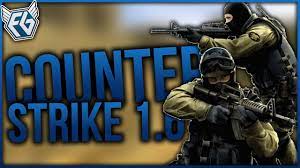Counter-Strike, often regarded as the benchmark for tactical first-person counter-strike 1.6 download shooters (FPS), has not only transformed the gaming landscape but also shaped competitive eSports. Originally a mod for Half-Life, it has evolved into one of the most influential and enduring titles in the gaming world. Through its strategic depth, intense gameplay, and high skill ceiling, Counter-Strike has maintained a vibrant community for over two decades.
The Origins: A Mod with Unprecedented Impact
Counter-Strike’s humble beginnings trace back to 1999, when Minh “Gooseman” Le and Jess “Cliffe” Cliffe, both modders, released it as a modification for Half-Life. Their intent was simple: they wanted to create a more realistic, team-based multiplayer experience compared to the run-and-gun mechanics of the time. Counter-Strike introduced a tactical approach to FPS games, focusing on careful strategy, team coordination, and precise shooting.
In a rapidly growing gaming market, Counter-Strike’s popularity exploded. Players quickly embraced its balanced gameplay, where each match pitted two teams against each other—Terrorists and Counter-Terrorists—tasked with completing objectives like planting or defusing bombs, or rescuing hostages. It set itself apart from other shooters by emphasizing team strategy, communication, and tactics over sheer reflexes and individual kills.
The Evolution: From 1.6 to Global Offensive
After its success as a mod, Counter-Strike was officially released as a standalone game in 2000. This version, known as Counter-Strike 1.6, became an iconic title in the FPS genre, further solidifying the foundation for competitive play. It introduced improvements in matchmaking, new maps, and refinements to gameplay that defined a generation of gamers.
As the years passed, several versions of the game continued to evolve. Counter-Strike: Condition Zero (2004) and Counter-Strike: Source (2004) aimed to modernize the graphics and gameplay mechanics, but it was Counter-Strike: Global Offensive (CS:GO), released in 2012, that would go on to define the franchise for a new generation.
CS:GO revolutionized Counter-Strike with new features such as matchmaking, improved graphics, and updated weapons and maps. The addition of skins and the in-game marketplace also added a layer of player customization, leading to a thriving community and a multi-million-dollar industry in virtual goods. Importantly, CS:GO was designed to appeal to both veteran players and newcomers, offering a more refined experience without losing the core elements that made the game popular.
Gameplay: Tactical Depth Meets High-Speed Action
What makes Counter-Strike stand out from other FPS games is its remarkable balance between strategy and fast-paced action. The 5v5 matches create an environment where every player’s role matters. The Terrorists attempt to plant a bomb at one of two bomb sites, while the Counter-Terrorists must prevent this by either eliminating the enemy or defusing the bomb. Every round starts with a limited budget, forcing players to make tactical decisions about how to spend their money on weapons and equipment.
The beauty of Counter-Strike lies in the attention to detail. The game rewards players who possess precise aim, effective communication, and, most importantly, strategic thinking. A great Counter-Strike player knows when to take risks, when to play conservatively, and how to work as part of a team to outsmart the enemy. Maps like Dust2, Inferno, and Mirage have become classics, requiring players to master angles, map control, and coordinated team rotations.
One of the key elements of the game’s appeal is its high skill ceiling. Unlike many other shooters, Counter-Strike demands not only reflexes but also an understanding of game mechanics, map knowledge, and psychological warfare. Players can often gain a decisive advantage simply through superior positioning, tactical decisions, or bluffing.
Competitive Scene: From LAN Parties to Global Events
Counter-Strike’s success was amplified by its competitive scene. In the early 2000s, LAN parties and community-run tournaments showcased the game’s potential for competitive play. By 2003, professional organizations began to take notice, with the first World Cyber Games (WCG) Counter-Strike tournament taking place in South Korea. The international attention helped cement Counter-Strike as a mainstay in eSports.
As Counter-Strike evolved, so did its professional ecosystem. Major organizations such as ESL, DreamHack, and ELEAGUE began to host large-scale tournaments, attracting top-tier teams from around the globe. The introduction of CS:GO only served to heighten this trend, leading to increasingly large prize pools and more sophisticated production values for events. The CS:GO Major Championships, held bi-annually since 2013, has become one of the most prestigious events in eSports, with millions of viewers tuning in to watch the world’s best teams compete for the championship.
The popularity of these events demonstrated Counter-Strike’s growing influence as an eSport. While games like League of Legends and Dota 2 captured significant attention, Counter-Strike continued to hold its ground, appealing to fans who enjoyed its combination of strategic depth and fast-paced action. The eSports scene further expanded with streaming platforms like Twitch, where fans could watch top players and teams in action, contributing to the community’s rapid growth.
A Cultural Phenomenon: Beyond Gaming
Counter-Strike’s influence extends beyond the realm of gaming. The game’s iconic status has made it a cultural touchstone in various circles. Professional players have become celebrities in their own right, with their gameplay and personalities garnering huge followings. CS:GO’s skins market has even led to the rise of an economy centered around in-game items, allowing players to buy, sell, and trade unique weapon skins, some of which can fetch significant sums of money.
Moreover, Counter-Strike has influenced numerous aspects of pop culture, from references in movies and TV shows to esports documentaries. Its enduring legacy is evident in its presence at major gaming conventions, its impact on game design, and its status as a global competitive sport.
Conclusion: A Timeless Classic
Counter-Strike’s journey from a mod to a global phenomenon is a testament to its enduring appeal and its ability to adapt to the changing demands of the gaming community. With its tactical depth, high skill ceiling, and strong eSports presence, Counter-Strike has proven itself not just as a game but as a living, breathing entity that continues to shape the FPS genre and competitive gaming.
As CS:GO remains one of the most-played and watched games in the world, the future of Counter-Strike looks as bright as ever. With a passionate player base, a strong competitive scene, and an ever-growing cultural influence, Counter-Strike is likely to continue captivating players and fans for years to come. Its legacy is secure, and its influence on gaming history will never be forgotten.

